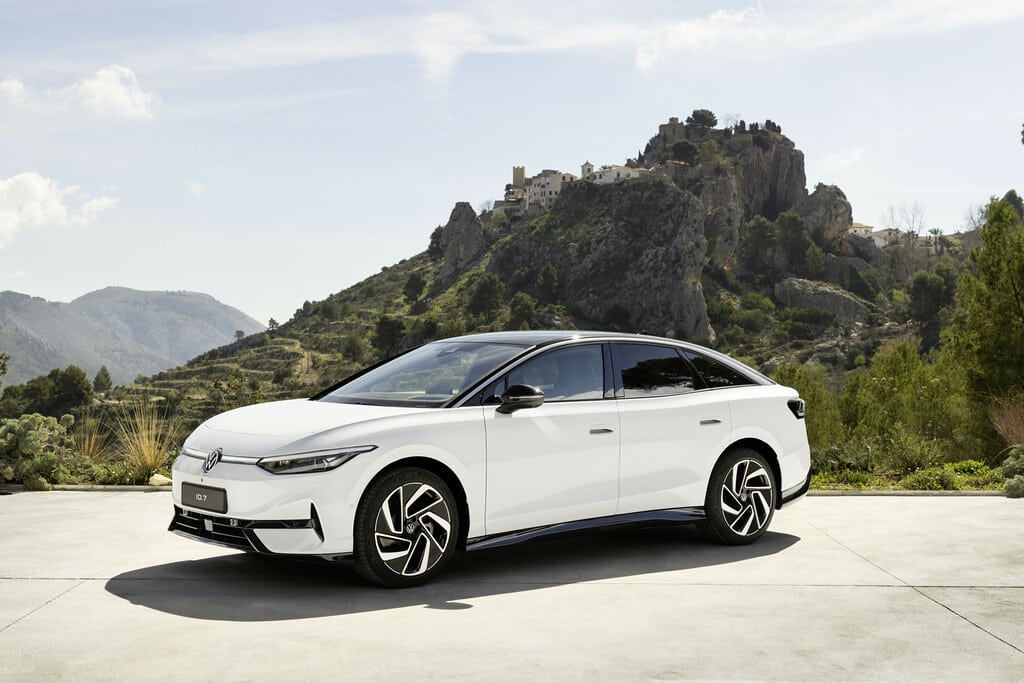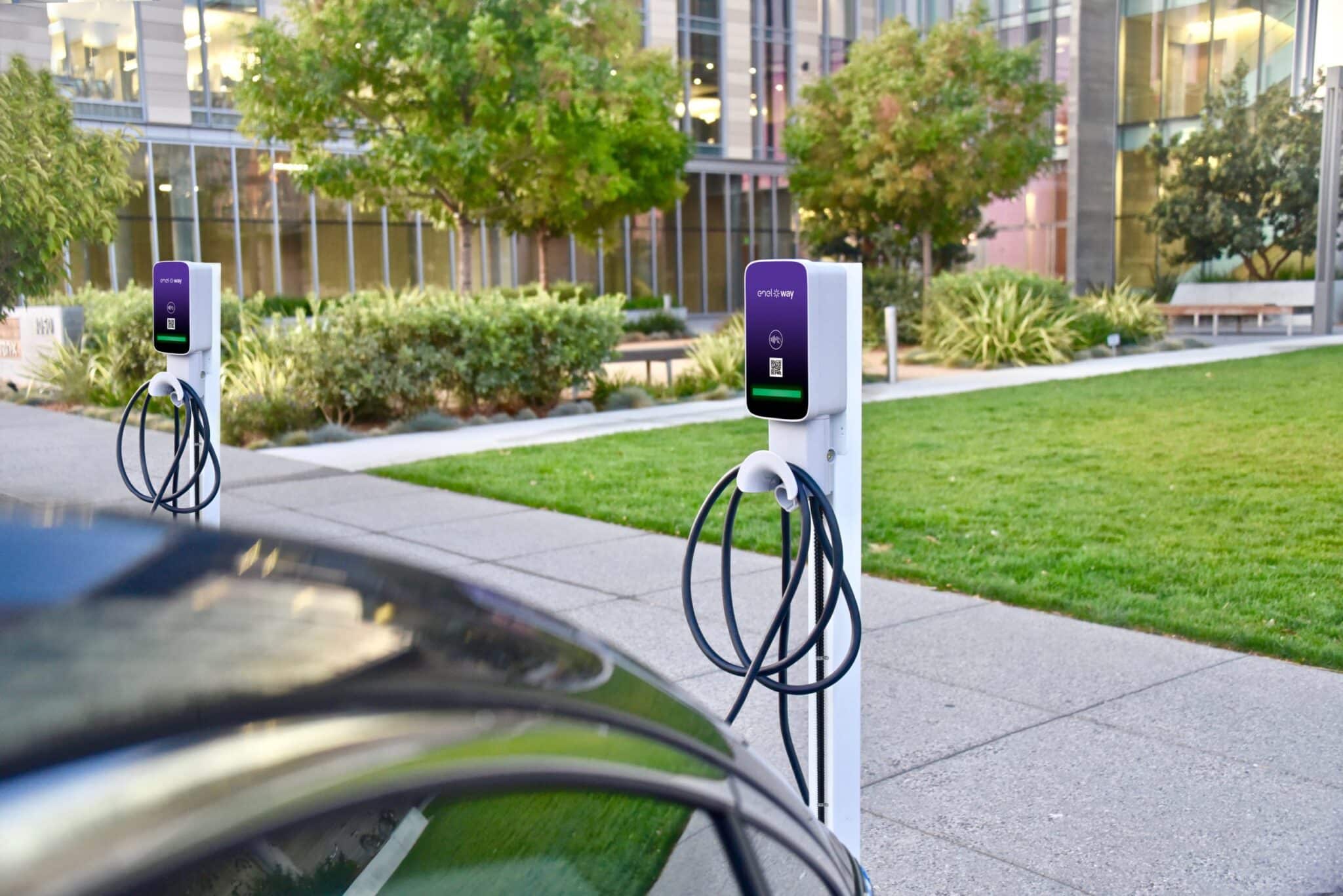Welcome to the latest edition of the EV Universe Electric Newsletter #018, your go-to source for all things electric vehicles!
In each edition, we take a closer look at the exciting developments in the EV world and dive into the latest news and trends shaping the industry. From the latest makes and models to advancements in electrification, to innovative accessories and technologies, we’ve got you covered.
Join us on this journey. Let’s explore the future of sustainable transportation and its electrifying impact on our world. In this edition, we are covering the Biden admin continues to work on adding new chargers across US, Volkswagen ID.7, and updates on new electric vehicle tax credit rules.
“Biden Administration Commits to Adding Over 100,000 Electric Vehicle Chargers Across the US“
- Biden administration signs new commitments for EV charging options to increase accessibility: The administration has secured investment pledges from Uber, Zipcar, and other tech companies to add more than 100,000 public EV chargers around the U.S. by the end of the decade. This will help spur domestic manufacturing and boost U.S. competitiveness, creating new jobs.
- Enel X Way to sell over 2 million EV chargers in North America by 2030: Enel X Way has committed to selling over 2 million EV chargers, including 10,000 public DC fast charging stations, in North America by 2030. This move will help increase access to charging and speed up EV adoption across the continent.
- Madison, Wisconsin to convert entire fleet to EVs by 2030: City officials in Madison, Wisconsin, have committed to converting their entire fleet of about 900 vehicles to EVs by 2030. This is a significant step in reducing the city’s carbon footprint and promoting a cleaner environment.
- Walmart to install fast-charging stations at thousands of locations across the country: Walmart has committed to installing new electric vehicle fast-charging stations at thousands of Walmart and Sam’s Club locations across the country by 2030. This will make it easier for EV drivers to charge up and help reduce range anxiety.
- Polls show mixed opinions on EV adoption, despite increased interest: While interest in EVs has increased, polls show that a majority of Americans still aren’t sold on going electric for their next purchase due to higher prices and concerns about charging infrastructure. However, about 4 in 10 U.S. adults are at least somewhat likely to switch to an EV for their next buying round, showing a growing trend towards sustainable transportation options.
[cta_blog_section title=’Looking for your next EV?’ cta_url=’https://www.evuniverse.com/best-selling-electric-cars’ cta_button=’VIEW LISTINGS’]
“Volkswagen Launches ID.7: A Luxury Electric Limousine with Impressive Range and Premium Features”

- Impressive Range and Powerful Motor. The ID.7 is Volkswagen’s first global electric model in the upper mid-size class, boasting an efficient powertrain with ranges up to 700 km (WLTP) and a powerful motor that delivers 210 kW (286 PS). This motor is the most powerful and highest-torque electric drive motor in a Volkswagen ID. model so far, and it can be used in the ID.7 regardless of the battery size. With charging capacities of up to 200 kW, the ID.7 is perfect for frequent drivers and fleet customers.
- A Spacious and Aerodynamic Design. Designed based on aerodynamic principles, the ID.7 features a sleek roof that slopes elegantly to the rear in coupé style, creating an excellent drag coefficient of about 0.23 depending on the vehicle equipment. The vehicle is almost five meters long, with a long wheelbase and short overhangs, providing plenty of space in the interior for all occupants.
- New Operating and Display Concept. Volkswagen has introduced a new operating and display concept in the ID.7, including a 15-inch infotainment system screen, augmented reality head-up display, and a backlit touch slider. The new air conditioning operating concept is integrated on the top level of the infotainment system, along with freely assignable favourites buttons. The ID.7 also comes with the new IDA voice assistant, which allows for natural voice commands to control various functions in the vehicle.
- Premium Equipment Options. The ID.7 offers several premium equipment options, including massage seats and an electronically dimmable panoramic sunroof that can be switched between opaque and transparent settings by touch control. For the first time in a Volkswagen, the optional front seats offer adaptive seat Climatronic with cooling or heating, as well as a drying function. The range of options is rounded off by a 700-watt sound system from Harman Kardon with 14 high-end loudspeakers, providing an impressive sound experience.
- Launch Dates and New Models. Volkswagen is launching ten new electric models by 2026, with the ID.7 being one of them. The ID.7 will be launched this year in Europe and China, followed by North America in 2024. Volkswagen aims to produce only electric vehicles in Europe by 2033 and achieve an 80% electric car share in Europe by 2030.
[cta_blog_section title=’Find the best parts for your EV here.’ cta_url=’https://www.evuniverse.com/shop-ev-parts’ cta_button=’SHOP PARTS’]
“Updated New Tax Credit Rules for Electric Vehicles: What You Need to Know“
- New Battery Sourcing Requirements Cause Changes to Federal Tax Credits for EVs. Changes to electric vehicle tax credits are coming into effect from April 18th, with new requirements for battery sourcing. The changes will restrict access to the full $7,500 tax credit for electric vehicle buyers, with some popular models only eligible for $3,750, and others losing the credit altogether. The rules are meant to incentivize U.S.-based production by requiring a certain percentage of battery minerals and components be sourced from North America or a U.S. trade partner.
- Popular EV Models to Lose Tax Credits After April 18. American automakers like GM, Ford, and Tesla will benefit most from the new tax credit rules, while foreign automakers like Nissan and Volkswagen will lose access to the tax credit as their batteries don’t have enough domestic or partner-country content. Hyundai and Kia have already lost access because they don’t yet build their EVs in North America. Assembling vehicles in North America and keeping the sticker price below $55,000 for cars and $80,000 for SUVs and trucks are among the requirements to be eligible for the tax credit.
- American Automakers Stand to Benefit the Most from Revamped Tax Credit Rules. Buyers looking for the Tesla Model Y, Chevy Bolt, and other popular models will still get the full $7,500 tax credit. But several models, including the VW ID.4, Nissan Leaf, and Rivian, will lose the credit altogether. Meanwhile, a half dozen other models will get a $3,750 credit instead of the full amount.
- Eligibility for Tax Credits Will Depend on Assembly Location and Sticker Price. Used electric vehicles are also eligible for a tax credit worth 30% percent of the sale price, up to a cap of $4,000. To be eligible, the vehicle needs to be at least two years old, bought from a dealer, and meet weight and battery size requirements.
- Buyers of EVs Must Meet Income Cap and Ensure Tax Liability is Large Enough to Claim Credit. The tax credit for leased vehicles is a separate $7,500 tax credit with no restrictions on price, income, or where the car was built. However, buyers need to make sure that the leasing company passes the discount along to them. Buyers can get the credit as a discount at the dealership, instead of a credit on their own taxes, starting next year. The rules around electric vehicle tax credits are still in flux and are likely to change over time as the government seeks to boost U.S.-based production and EV adoption.


